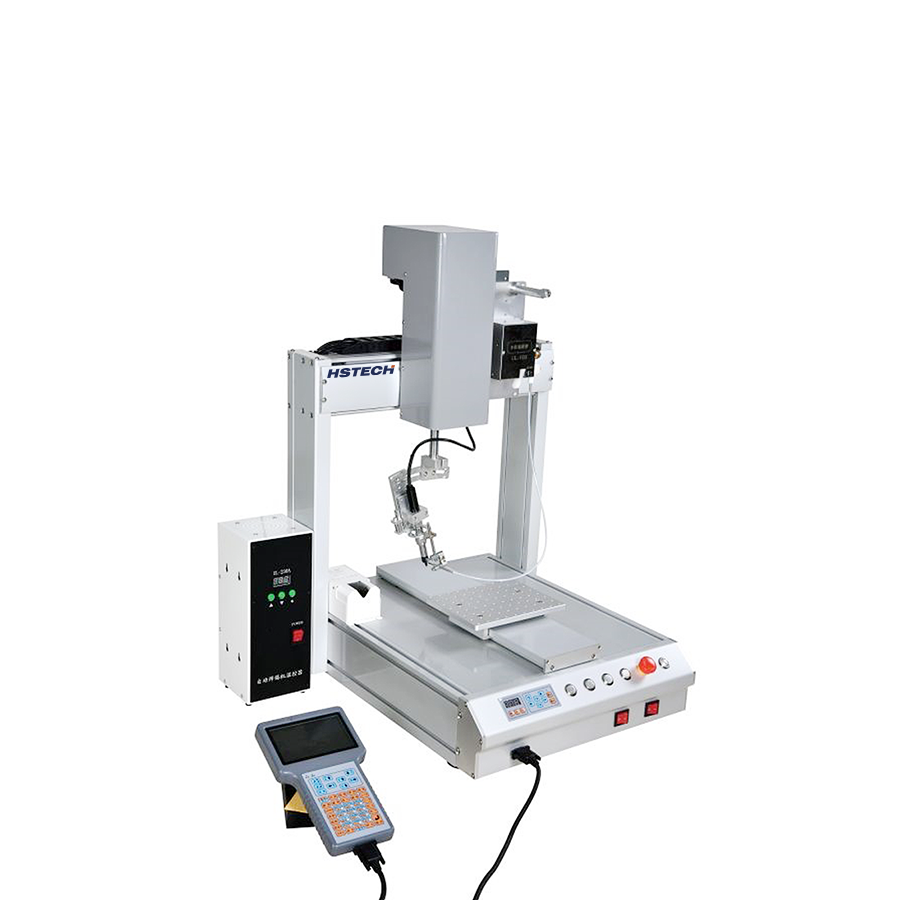What are the standards for Robotic Soldering Machine solder
Release time:
2022-03-08
Robotic Soldering Machine is one of the common equipment in modern society. Many people must have some understanding of Robotic Soldering Machine. Using Robotic Soldering Machine solder as a modern welding method has greatly improved the efficiency of welding.
Robotic Soldering Machine is one of the common equipment in modern society. Many people must have some understanding of Robotic Soldering Machine. Using Robotic Soldering Machine solder as a modern welding method has greatly improved the efficiency of welding. At the same time, it saves the labor cost required for welding, and meets the requirements of product welding to a large extent, creating great benefits for the company. Robotic Soldering Machine mainly has three soldering methods: spot welding, drag welding and pressure welding. The soldering method can be determined according to the characteristics of the product. What are the soldering standards of Robotic Soldering Machine?

What are the standards for Robotic Soldering Machine solder:
1. The weldment must have excellent weldability
Solderability refers to the effect of the aluminum alloy that is well separated from the metal composite material to be welded and the solder at a stable temperature. Not all metal materials have good weldability. Some metal materials such as chromium, molybdenum, tungsten, etc. have poor weldability; some metal materials have better weldability, such as red copper and red copper. Wait. During welding, because of the ultra-low temperature, air oxide film will develop on the surface of metal materials, which will endanger the weldability of metal composite materials. In order to further improve the solderability, countermeasures such as surface electroplating and gold plating can be used to prevent air oxidation on the surface of the material.
2. Apply suitable solder paste
The function of the flux paste is to remove the air oxide film on the surface of the soldered parts. Different soldering processes should choose different flux pastes, such as nickel-chromium, stainless steel, aluminum and other metal composite materials. If there is no flux paste, soldering cannot be carried out. When the Robotic Soldering Machine solders delicate electronic devices such as circuit boards, in order to make the soldering firm, a flux paste dominated by rosin is generally used.
3. The weldment should be heated to a moderate temperature
When welding, the function of energy is to solidify the solder and heat the welding target, so that the tin and lead molecules obtain sufficient kinetic energy to wet into the lattice constant of the surface of the metal material to be welded to produce aluminum alloy. If the welding temperature is too low, it is beneficial to the wetting of the welding material molecules, and it is impossible to produce aluminum alloy, which is very easy to produce empty welding; if the welding temperature is too high, the welding material will be in a non-carbide shape, which will slow down the flux generation and evaporation rate, Landing the quality of the soldering material will continue to cause the solder layer on the pcb circuit board to fall off when it is not optimistic.
4. The surface of the weldment should always be kept clean
In order to achieve better separation of solder and weldments, the welding surface must be continuously cleaned. Even the weldment with excellent weldability can cause air oxide film and oil stains on the surface of the weldment due to storage or oxidation. Try to remove the fouling film as clean as possible before welding, otherwise the welding quality cannot be guaranteed. The slight air oxide layer on the surface of the metal material can be removed by the effect of flux. The surface of the metal material with a serious air oxidation level should be removed by mechanical equipment or organic chemical methods, such as termination shaving or pickling and passivation.
5. Suitable welding time
Welding time refers to the whole process of welding, which includes the time for the metal material to be welded to reach the welding temperature, the solidification time of the solder, the full use of the flux paste and the time for the inherent metal material aluminum alloy. When the welding temperature is stable, the appropriate welding time should be determined according to the appearance design, essence and characteristics of the welded parts. If the welding time is too long, it is easy to maintain electronic devices or welding positions; if it is too short, it will not meet the welding requirements. Generally, the time for each spot welding should not exceed 5s at most.
The above content is an introduction to the soldering standards of Robotic Soldering Machine. The soldering standards of Robotic Soldering Machine can be customized according to their own product requirements. The soldering is qualified and the efficiency is relatively high. It is widely used in PCB boards, LEDs It eliminates the uncontrollable factors of traditional manual operation and effectively improves product quality and production efficiency.



